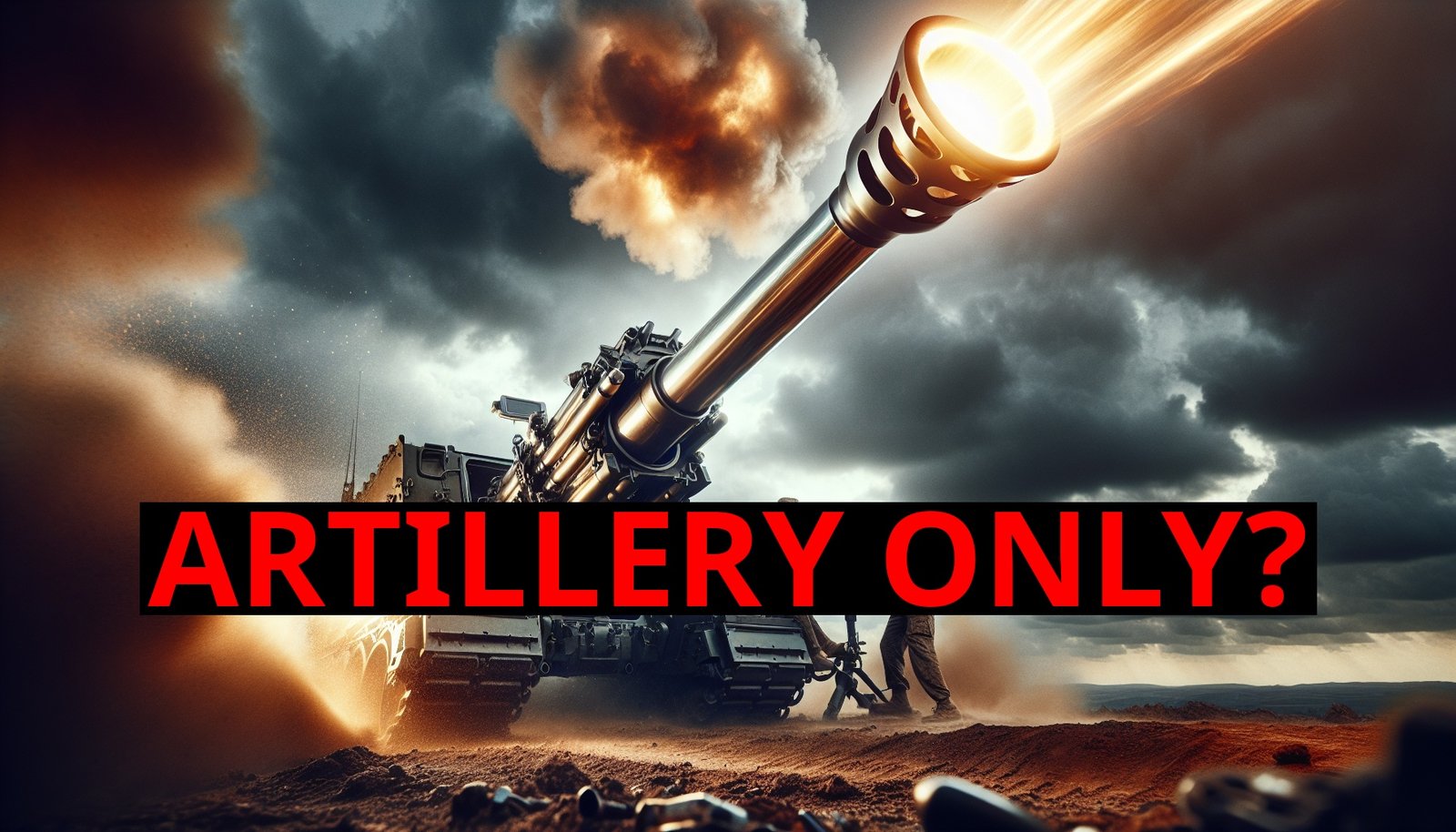In modern warfare, artillery is often recognized for its immense destructive power and cost-effectiveness. This has been particularly evident in recent conflicts, such as the situation in Ukraine, where artillery has played a dominant role. However, while artillery’s advantages are clear, relying solely on artillery and eliminating tanks from the battlefield introduces significant strategic challenges.
The Power Of Artillery
Artillery holds several key advantages that make it a formidable force:
- Mass Production and Cost-Effectiveness: Artillery shells can be produced en masse on assembly lines, making them a cost-effective option. The ability to transport large quantities of ammunition to the front lines ensures a continuous supply for sustained operations.
- Range and Impact: Artillery can target enemy positions from a safe distance, often without immediate retaliation. This capability allows for continuous bombardment, inflicting significant damage on enemy infrastructure and troop concentrations.
- Simplified Logistics: Relying heavily on artillery simplifies logistics. Without the need for tanks and their associated maintenance and supply chains, military operations can focus resources on delivering high-explosive ordnance.
The Hypothetical: Eliminating Tanks For Artillery
At first glance, eliminating tanks in favor of increasing artillery seems to boost overall firepower. Suppose this shift increases a military’s firepower by 25% due to the increased number of artillery units and ammunition. This seems advantageous, but it prompts an important question: What happens when the enemy adapts to this strategy?
Enemy Adaptation: Increasing Firepower
If a military force eliminates tanks from its arsenal, the enemy no longer needs to carry anti-tank weapons. This shift has profound implications:
- Reallocation of Resources: Without the need for anti-tank weapons, the enemy can focus entirely on high-explosive ordnance and autocannons. This shift allows them to increase their firepower significantly, potentially by 30-40%. Every anti-tank missile replaced by a high-explosive shell represents a substantial increase in damage potential.
- Enhanced Infantry Fighting Vehicles (IFVs): With no tanks to counter, the enemy’s IFVs can operate with increased effectiveness. Equipped with autocannons and high-explosive ammunition, these vehicles can inflict heavy casualties on infantry and light vehicles.
- High-Explosive Dominance: High-explosive weapons inflict far more damage than anti-tank ordnance. An ATGM (Anti-Tank Guided Missile) might destroy one tank (which the crew is likely to survive), whereas an airburst munition can kill dozens of infantry. By focusing on high explosives, the enemy maximizes their damage output.
- Human Losses: High-explosive ordnance results in significantly greater human casualties. The destructive power and wide-area impact of these weapons can devastate infantry units, causing massive loss of life. In contrast, anti-tank weapons, being more specialized, do not have the same broad destructive capability.
Strategic Consequences
The strategic consequences of eliminating tanks are significant:
- Increased Vulnerability: Without tanks, a military force becomes more vulnerable to the enemy’s enhanced firepower. Infantry and light vehicles are more exposed to high-explosive attacks, leading to higher casualties and reduced combat effectiveness.
- Logistical Challenges for the Enemy: While simplifying logistics seems advantageous initially, it also simplifies the enemy’s logistics. They no longer need to supply anti-tank weapons and can streamline their operations around high-explosive ordnance, further increasing their efficiency.
- Higher Human Losses: The focus on high-explosive weapons by the enemy leads to increased human casualties. The destructive capacity of these weapons means that infantry and other soft targets will suffer significantly more, impacting the overall morale and effectiveness of the military force. Remember, ammunition and tanks can be mass produced on assembly lines, human losses are the most costly to the military and society.
🚨 It’s essential to note that this discussion highlights just one aspect of the complex strategic dynamics. Eliminating tanks not only strengthens the enemy but also strips away numerous tactical options that tanks provide. Tanks play a critical role in maneuver warfare, direct fire support, and armored protection, which are irreplaceable by artillery alone.
Conclusion: The Balance Of Power
While increasing artillery units and eliminating tanks may initially seem to boost firepower, it ultimately enhances the enemy’s capabilities even more. By reallocating resources to high-explosive weapons and enhancing their IFVs, the enemy can inflict significantly more damage and human casualties. Therefore, maintaining a balanced force that includes both tanks and artillery is essential for achieving strategic success on the battlefield. The presence of tanks forces the enemy to diversify their arsenal, preventing them from focusing solely on high-explosive ordnance and maximizing their destructive potential.













